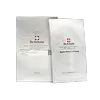What's inside
What's inside
 Key Ingredients
Key Ingredients

 Benefits
Benefits

 Concerns
Concerns

No concerns
 Ingredients Side-by-side
Ingredients Side-by-side

Water
Skin ConditioningGlycerin
HumectantYeast
Skin ConditioningPropylene Glycol
HumectantDipropylene Glycol
HumectantGlycyrrhiza Uralensis Root Extract
Skin ConditioningTranexamic Acid
AstringentBetaine
HumectantAloe Barbadensis Leaf Juice
Skin ConditioningXanthan Gum
EmulsifyingPolysorbate 20
EmulsifyingDipotassium Glycyrrhizate
HumectantMethylparaben
PreservativePhenoxyethanol
PreservativeMalus Domestica Fruit Cell Culture Extract
Skin ConditioningDisodium EDTA
Ethylhexylglycerin
Skin ConditioningTriethylhexanoin
MaskingGlycyrrhiza Glabra Root Extract
BleachingDiphenyl Dimethicone
EmollientMentha Haplocalix Extract
MaskingPolyglyceryl-10 Myristate
Skin ConditioningWater, Glycerin, Yeast, Propylene Glycol, Dipropylene Glycol, Glycyrrhiza Uralensis Root Extract, Tranexamic Acid, Betaine, Aloe Barbadensis Leaf Juice, Xanthan Gum, Polysorbate 20, Dipotassium Glycyrrhizate, Methylparaben, Phenoxyethanol, Malus Domestica Fruit Cell Culture Extract, Disodium EDTA, Ethylhexylglycerin, Triethylhexanoin, Glycyrrhiza Glabra Root Extract, Diphenyl Dimethicone, Mentha Haplocalix Extract, Polyglyceryl-10 Myristate
Water
Skin ConditioningMethylpropanediol
SolventGlycerin
HumectantIsopentyldiol
Humectant1,2-Hexanediol
Skin ConditioningBetaine
HumectantTrehalose
HumectantHydroxyacetophenone
AntioxidantPropanediol
SolventPanthenol
Skin ConditioningDisodium EDTA
Aloe Barbadensis Leaf Extract
EmollientButylene Glycol
HumectantMethyl Diisopropyl Propionamide
MaskingAcrylates/C10-30 Alkyl Acrylate Crosspolymer
Emulsion StabilisingAmmonium Acryloyldimethyltaurate/Vp Copolymer
Tromethamine
BufferingPentylene Glycol
Skin ConditioningHydrogenated Lecithin
EmulsifyingCentella Asiatica Extract
CleansingSodium Hyaluronate
HumectantFicus Carica Fruit Extract
HumectantLaminaria Japonica Extract
Skin ProtectingUlmus Davidiana Root Extract
Skin ConditioningViola Mandshurica Flower Extract
AntioxidantDioscorea Japonica Root Extract
Skin ConditioningAcmella Oleracea Extract
Skin ProtectingBeta-Glucan
Skin ConditioningHydrolyzed Hyaluronic Acid
HumectantCeramide NP
Skin ConditioningSodium Hyaluronate Crosspolymer
HumectantMadecassoside
AntioxidantHyaluronic Acid
HumectantEthylhexylglycerin
Skin ConditioningMadecassic Acid
Skin ConditioningAsiaticoside
AntioxidantAsiatic Acid
Skin ConditioningSodium Acetylated Hyaluronate
HumectantHydrolyzed Sodium Hyaluronate
Skin ConditioningWater, Methylpropanediol, Glycerin, Isopentyldiol, 1,2-Hexanediol, Betaine, Trehalose, Hydroxyacetophenone, Propanediol, Panthenol, Disodium EDTA, Aloe Barbadensis Leaf Extract, Butylene Glycol, Methyl Diisopropyl Propionamide, Acrylates/C10-30 Alkyl Acrylate Crosspolymer, Ammonium Acryloyldimethyltaurate/Vp Copolymer, Tromethamine, Pentylene Glycol, Hydrogenated Lecithin, Centella Asiatica Extract, Sodium Hyaluronate, Ficus Carica Fruit Extract, Laminaria Japonica Extract, Ulmus Davidiana Root Extract, Viola Mandshurica Flower Extract, Dioscorea Japonica Root Extract, Acmella Oleracea Extract, Beta-Glucan, Hydrolyzed Hyaluronic Acid, Ceramide NP, Sodium Hyaluronate Crosspolymer, Madecassoside, Hyaluronic Acid, Ethylhexylglycerin, Madecassic Acid, Asiaticoside, Asiatic Acid, Sodium Acetylated Hyaluronate, Hydrolyzed Sodium Hyaluronate
Ingredients Explained
These ingredients are found in both products.
Ingredients higher up in an ingredient list are typically present in a larger amount.
Betaine is a common humectant (a substance that promotes retention of moisture). It's known to be gentle on the skin and can help balance hydration.
This ingredient is best for improving hydration and soothing irritated skin. Studies also show it helps even out skin tone.
Fun fact: Betaine is naturally created in the skin and body. The kind found within cosmetic products can be either plant-derived or synthetic.
Another name for betaine is trimethylglycine.
Learn more about BetaineDisodium EDTA plays a role in making products more stable by aiding other preservatives.
It is a chelating agent, meaning it neutralizes metal ions that may be found in a product.
Disodium EDTA is a salt of edetic acid and is found to be safe in cosmetic ingredients.
Learn more about Disodium EDTAEthylhexylglycerin (we can't pronounce this either) is commonly used as a preservative and skin softener. It is derived from glyceryl.
You might see Ethylhexylglycerin often paired with other preservatives such as phenoxyethanol. Ethylhexylglycerin has been found to increase the effectiveness of these other preservatives.
Glycerin is already naturally found in your skin. It helps moisturize and protect your skin.
A study from 2016 found glycerin to be more effective as a humectant than AHAs and hyaluronic acid.
As a humectant, it helps the skin stay hydrated by pulling moisture to your skin. The low molecular weight of glycerin allows it to pull moisture into the deeper layers of your skin.
Hydrated skin improves your skin barrier; Your skin barrier helps protect against irritants and bacteria.
Glycerin has also been found to have antimicrobial and antiviral properties. Due to these properties, glycerin is often used in wound and burn treatments.
In cosmetics, glycerin is usually derived from plants such as soybean or palm. However, it can also be sourced from animals, such as tallow or animal fat.
This ingredient is organic, colorless, odorless, and non-toxic.
Glycerin is the name for this ingredient in American English. British English uses Glycerol/Glycerine.
Learn more about GlycerinWater. It's the most common cosmetic ingredient of all. You'll usually see it at the top of ingredient lists, meaning that it makes up the largest part of the product.
So why is it so popular? Water most often acts as a solvent - this means that it helps dissolve other ingredients into the formulation.
You'll also recognize water as that liquid we all need to stay alive. If you see this, drink a glass of water. Stay hydrated!
Learn more about Water